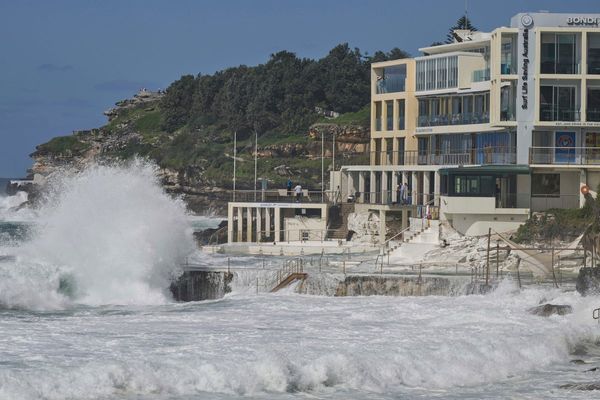
After the crushing defeat of the mighty Vijayanagara empire in the Battle of Talikota in 1565, a family of feudatories from Keladi—the Keladi Nayakas or Ikkeri Nayakas—rose from the ashes of the empire as a new power centre and established a kingdom which, at its peak, extended from northern Karnataka’s Gangavati river to Kerala’s Kasargod district in the south. Their rule spanned the coastal districts of Karwar, Mangaluru, the entire Shivamogga region and parts of Hassan, Dharwar, Chitradurga and Tumakuru districts of present-day Karnataka.
Owing to insufficient research and scholarship, the historiography of the Keladi Nayakas has been less accessible. But based on the contemporary literary sources, their lineage can be traced to Chaudappa—credited with founding the dynasty in 1499. From humble beginnings as rich farmers, they became the vassals of the Vijayanagara empire, earning the title of Nayakas, and ruled the region till Hyder Ali, the ruler of Mysore, conquered the region in 1763, dethroning Virammaji, the last queen of Keladi.
The Nayakas remained loyal to the Vijayanagara empire even after it was dismantled, and in one instance even rescued a depleted Sriranga III, the fugitive Vijayanagara emperor, by gifting Belur to him. During their reign, the Nayakas had to constantly ward off attacks from the Adilshahis in the north, Mysore in the south and even the Marathas. Although Chennammaji—one of the two woman rulers amongst the Nayakas—is credited with “rendering noble service during the most critical occasion in the life of Maratha state" by successfully fighting the Mughal forces led by Aurangzeb and providing shelter to Rajaram (son of Shivaji) in the late 17th century, the later Marathas (Peshwas) led many destructive campaigns into the region.
Yet, the Nayakas managed to consolidate their conquests under able rulers such as Sadashiva Nayaka, Venkatappa Nayaka and Shivappa Nayaka and played a crucial role in shaping the political, cultural and economic history of the Deccan for more than 200 years.
Located in the hilly regions of the Western Ghats, with an abundance of fertile land and easy access to the coast, the Nayakas controlled the trade of rice, pepper, areca nut, etc., becoming the most important ally of the colonial mercantile forces of the British, Portuguese and Dutch in the trade across the Arabian sea. Popular as efficient administrators, they patronized all religions and made grants to temples, mosques and mathas across the kingdom. Intriguingly, they shifted capitals twice, first from Keladi to Ikkeri in 1511-12 and then from Ikkeri to Bidnur (present-day Nagara) in 1639. A unique architecture style, which intelligently used the topography of the land and adapted to the region’s weather conditions, emerged during their rule.
The greatest examples of religious architecture from the period are the two Shaivite temple complexes: the Rameshvara temple complex at Keladi and the Aghoreshvara temple complex at Ikkeri. There are three shrines, dedicated to Parvati, Rameshvara and Virbhadra, in the complex at Keladi, about 80km from Shivamogga town. While the Parvati temple consists of an open mandapa made up of carved wooden pillars and ceiling, the other two are built in granite. The ceiling in the mandapa of the Virbhadra temple is the most ornate, with a magnificently carved scene featuring Gandabherunda (a two-headed mythical bird) holding a lion in each beak and an elephant in each claw. There are also serpents entwined in the shape of a circle and numerous other animal reliefs over the pillars and ceiling. The exteriors infrequently feature Mithunas (amorous couples as well as fertility goddesses) and other Hindu deities. A tall stone pillar—a Deepastambha—adds grandeur to the complex.
Interestingly, the entrance to the complex, which hides the architectural wealth from view, is a colonnaded hallway with angled clay-tiled roofing, indicating that the heavy monsoon in the region might have influenced this choice.
Approximately 10km away is the Aghoreshvara temple complex in Ikkeri. There are three shrines there too—the biggest one dedicated to Aghoreshvara, with a Parvati shrine to its left and a Nandi in the front. The pillars, ceilings and exterior walls are covered with carved reliefs of deities, Mithunas and mythical animals, as in the Rameshvara temple. The most surprising elements here are the cusped arched doorways and the ornate windows in the Parvati and Nandi shrines, and the merlons and minarets topped with spherical domes in the four corners of the Nandi enclosure. These elements indicate the influence of the Adilshahi and Bahmani architectural styles on this region.
Though there are records of grants and patronage from Nayakas to these two temple complexes, there is no evidence of the exact date of construction yet.
Being Lingayats, the Nayakas also patronized several Veershaiva mathas. One such example is the still-in-use Rajguru Hirematha in Keladi. Curiously, only a handful of Lingayat religious institutions from the Nayaka period remain today.
Pietro Della Valle, an Italian traveller who visited during the rule of Venkatappa Nayaka in 1623, wrote eloquently of the many gates and the concentric nature of Ikkeri fortifications. Unfortunately, none of this is visible now. An archaeological survey by an American researcher more than a decade ago revealed the presence of remains of the palace and the fort in Ikkeri but nothing has been discovered of the palace or fort in Keladi yet. Nevertheless, the breathtaking fort atop the hill in Nagara and the even higher fortifications in Kavaledurga are testimony to Nayaka fort architecture. Surrounded by a deep moat, these forts, mostly in ruins now, are said to have housed royal residences, audience halls, water tanks, treasuries and granaries.
Of the two remaining examples of Nayaka royal architecture, the Devaganga pleasure resort near Nagara, about 80km from Shivamogga, is a unique structure. One large square tank surrounded by six differently shaped (star, lotus, stellate) smaller ponds in a sunken area flanked by laterite walls forms what might have been a relaxing destination for royal personnel.
The other example is a palace-like structure, similar in design and construction to Tipu Sultan’s summer palace in Bengaluru, discovered and restored in the 1980s in the fort area of Shivamogga city, on the banks of the river Tunga. This palace complex is loosely attributed to Shivappa Nayaka (1645-60).
The Nayakas won many admirers across the world—Alexander Hamilton famously wrote of his visit in the late 17th century: “The subjects of this country observe the law so well, that robbery or murder are hardly heard of among them." Apart from temples, palaces and forts, they built public infrastructure such as water reservoirs, parks, stepped wells, tanks and roads; Hirekere, in Keladi, is a striking example of a reservoir from the period. The medieval sluice gates still stand tall alongside more recent ones. This reservoir, which fills up during the monsoon, is the primary source of water for the surrounding region.
Conservation and restoration of the Keladi Nayakas’ architectural heritage could give a further boost to tourism in the Malnad region, already sought after for its natural and wildlife attractions. In recent times, a number of local enthusiasts have collaborated with state officials and scholars to raise awareness of this immense cultural heritage. The detailed work undertaken in studying the 18th century Mysore rockets discovered in the region is a result of this unusual bonhomie. The work is on display at the state archaeology museum, housed in the Shivappa Nayak Palace.
Hopefully, new archaeological and historical research will fill the current gaps and further our understanding of the Keladi Nayakas rule.
Basav Biradar is a researcher, writer and documentary film-maker.







